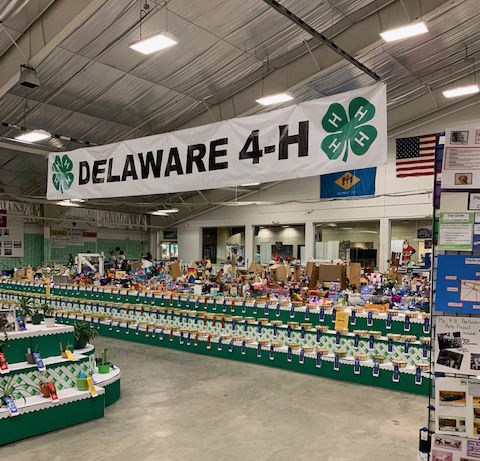After School: Still the Prime Time for Juvenile Crime in Delaware
Afterschool Fights Crime in Delaware
Related
The more than 5,000 law enforcement leaders around the nation who are members of Fight Crime: Invest in Kids, have long known that the hours immediately after school lets out, when parents are likely not available to supervise, are the prime-time for juvenile crime. Over the past 20 years, law enforcement leaders across the country have relied on high-quality afterschool programs to provide supportive, stable, and enriching environments with caring adults that keep children and youth out of trouble and safe, while supporting their academic success, and social and emotional development.
The Prime Time for Juvenile Crime in Delaware

In Delaware, juvenile crime peaks from 2 to 6 p.m. on school days, with about 25 percent of all juvenile crime on those days occurring during the hours following the last school bell.
Program Highlight: 4-H, Dover

For the past eight years, the Delaware 4-H Mentoring Program has partnered with the National 4-H Council’s Office of Juvenile Justice Delinquency Prevention Mentoring Program on an effort to establish connections between risk, high risk, or underserved young people and caring adults and build protective factors to prevent their involvement in the juvenile justice system. Based on the Dover Air Force Base, the project combines mentoring and science, technology, engineering, and math (STEM), as youth engage in deliberate science work—from coding to robotics—all designed to spark an interest in STEM where kids can explore, learn, and engage in hands-on activities. The mentor-to-youth ratios are intentionally kept low, as approximately 60 youth are paired in small groups with staff members that remain a consistent figure in their lives. The first half of the daily three-and-a-half-hour program is dedicated to homework help, recreational time, and a snack, and the latter half is allocated to the 4-H enrichment programming. Youth not only have the opportunity to explore their scientific curiosities through STEM learning, but also get to engage with their community through service learning projects as they develop social and emotional competencies, including team work, communication skills, and resiliency.
Allowing us to implement practices that help provide positive outcomes and further align research and evidence of effective mentoring.
Doug Crouse, State 4-H Program Leader for the University of Delaware
Because the program is located on a military base, the youth center has a unique role to play in the community—for many youth, the center serves not just as a place to go after school, but as a second home that provides resources and supports when they face difficult challenges, such as the deployment of parents or family members. Delaware 4-H has had a very strong partnership with the military base for 9 years. Staff who serve as mentors are dedicated to working with the military community, as many have personal ties to the military; many mentors grew up in military families and some are previous members of the military. “This has been an outstanding initiative for our Delaware 4-H Program” said Doug Crouse, State 4-H Program Leader for the University of Delaware. “It has allowed our youth development program to provide support to military families at the Dover Air Force Base while allowing us to implement practices that help provide positive outcomes and further align research and evidence of effective mentoring.”

Download the Graphic
Read More About
States
